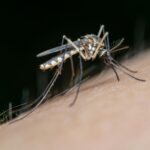US Election countdown for investors – Saxo Bank

– John Hardy, Chief Macro Strategist
This week: The status of the economy in focus through Friday job numbers
Polls have tightened a bit again, and thus back in Trump’s favour as we can see from the shift in the polling and betting odds. Stock markets saw a continued recovery in sentiment after the brief wipeout in early August. Indeed, ahead of this week’s Labor Day holiday on Monday in the US, the US S&P 500 Index posted a record high weekly closing level. Financials, industrials and materials posted the strongest week last week, while info-tech was weighed down a bit by Nvidia’s somewhat disappointing outlook, at least relative to stratospheric expectations.
The earnings calendar is quiet this week outside of the chip and software giant Broadcom, which reports on Thursday. There is a strong AI angle to that company’s potential outlook, so it bears watching for the general status of the AI theme.
With polls in closer balance, it is impossible to associate moves in specific assets with the anticipated election outcome, but the underlying direction of the economy is critical to track as we head toward November 5, as we discuss in the Chart of the Week below. A weak economy is historically associated with voters rejecting the party in power.
Chart of the week: What is the US bond market telling us?

The US yield curve is determined by the difference between the ten- and two-year US treasury yields (calculated as the ten-year less the two-year yield – shown with the dark blue line in the chart above). In recent decades, the longer ten-year yield has spent most of the time at higher levels than the shorter 2-year yield (the shaded green areas). This is considered normal as holders of bonds want more compensation, or yield, for holding a bond that expires farther into the future. When the longer-term rate slips below the short-term rate, the yield curve is said to be “inverted” (shaded dark red). The other line is the Federal Reserve’s policy rate, with the dotted line indicating that the market is predicting that the Fed will cut the rate from its current level of 5.25-5.50% to 3.00-3.25% by late next year.
Yield curve inversions happened when the central bank, in this case the Federal Reserve, has hiked interest rates to levels that are intended to slow the economy. Market participants are happier to buy the longer-term treasuries at lower yields than shorter-term treasuries in the belief that interest rates are far too high to maintain at current levels and the Federal Reserve will eventually cut rates once the economy slows.
As indicated with the dotted line, the market is indeed predicting those interest rate cuts are coming, starting with the September 18 FOMC meeting. While markets may initially think the prospects of lower interest rates to support the economy are a great thing, history shows that the Fed is usually “behind the curve” in adjusting policy and that its rate-cutting is only a delayed reaction to a rapidly slowing economy. The yield curve begins to “steepen” as the market predicts more and more cuts as the Fed tries to catch up. This takes the shorter-term yields like the 2-year well back below the 10-year, like in the cycles starting in 2001 and in 2007 you can see on the chart.
The key question here as we march towards Election Day is whether this yield curve steepening is benign and suggests a rapidly weakening economy that will require many Fed cuts, or if it is simply a “soft-landing” scenario for now in which the Fed can cut back its policy rate a bit now that inflation levels have fallen well below its 5.25-5.50% policy rate. One thing is for sure: this cycle of yield curve inversion was very dramatic as the pandemic-linked spending blasted inflation to its highest levels in modern memory.
Key point on the US Election this week:
The polls are mean reverting after the Harris surge
The Labor Day Holiday this Monday the 2nd of September traditionally marks the end of the US summer and the return to school and work from the summer holidays. After the quick emergence of VP Harris as the Democratic nominee after President Biden stepped aside on July 21, her polling averages surged nearly every week through the convention the week before last. That convention failed to provide her with any additional bounce and now the polls seem to be mean reverting back to closer balance. Trump has taken a stronger lead in betting markets and some battleground- or “swing states” polls suggest the race is extremely tight – for example one in Michigan showing Trump with a 1% lead, if with a 4% polling margin of error. (Biden won Michigan by nearly 3% in 2020.) The campaigns will go full tilt from here until Election Day on the 5th of November.
Looking ahead: US Jobs report and the first presidential debate
Harris finally sat for an interview with a friendly CNN reporter last week. The interview was rated a “pass” by observers, though many criticised her for the lack of specifics on policy. It’s still a long wait until next Tuesday’s September 10 debate between Harris and Trump, and both sides are bickering about the terms of the debate and whether both microphones will be on or off while the person with the floor is speaking. That debate is likely the next best chance to jolt public opinion and the polls, giving us a possible test of whether market expectations are shifting as well.
Stay tuned this week for the US August labor report this Friday the 6th– especially the unemployment rate, which was at 4.3% in July and expected to have dropped to 4.2% in August. The Fed has recently highlighted its concern about the labor market and a weak report (higher unemployment rate) could move expectations towards a larger 0.50% interest rate cut.
Last Updated on 4 months by News Desk 1












